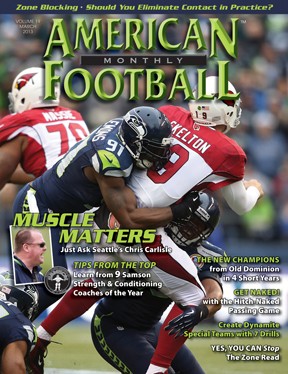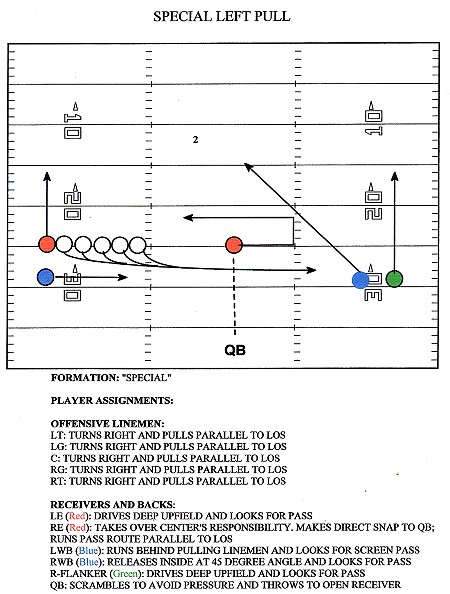Article CategoriesAFM Magazine
|
Trick Plays: the “Trojan Horse” of Football© More from this issueBy Bruce Reynolds • Retired High School Coach Steven Covey’s principle, “The main thing is to keep the main thing the main thing,” certainly applies to football. Too many coaches try to put in too many ‘new’ things for the big game. That is a big mistake. Concentrate on what you and your team know how to do best. Stay within your system and basic philosophy of offense and defense. Go with what you’re practiced a thousand times. By staying with the core plays that your players know, you will have the time to nibble at the corners with a few well-selected adjustments or ‘wrinkles’ to your game plan. This is especially important when you are playing a superior team. When you add some new ‘wrinkles’ you let your team know that this game is special. New things that help you win are always exciting to players and coaches alike; and your players will be more ‘pumped’ and focused for pre-game practice sessions. For an ‘upset’ victory you need every advantage that you can get. Putting in something special for the game can give you the emotional edge, the strategic edge, and the element of surprise. Remember the Trojan War? When all else had failed for the Greeks when they tried to topple the city of Troy, they pulled out all the stops. They went to the ultimate trick play – the Trojan Horse. One coaching point involving the trick play involves when to use it. I have two different approaches to the timing of when to run the play. Sometimes I ran it right before the half, hoping that the opposition would spend their halftime preparation making adjustments to this play. Then, I wouldn’t run it in the second half. The flip side is to save the play for the second half. That way, your opponenet cannot prepare halftime adjustments for something they have not seen. Both strategies can be effective. I can’t remember every going into a big game without some kind of special play. One season I put in a few wrinkles inspired by Mouse Davis’ version of the Run and Shoot offense. The diagram included shows one of the best trick plays that I have used. I called it ‘Special Left Pull.’ You can run it right or left and you can run it with multiple pattern variations.
Coaching Points: *The surprise play can be run on any down and distance situation. *After breaking the huddle, the team sprints to their positions and prepares for a quick count. The QB reads the pre-snap coverage of the defense. If one of the five potential receivers is not covered, the ball is thrown to him immediately. *In running their routes, the two widest receivers make a decision to cut after their fifth step and run to open areas or continue on their streak patterns. *The QB scrambles away from pressure and continues to lool downfield for the open receiver. (See diagram and player assignments) |
|
| HOME |
MAGAZINE |
SUBSCRIBE | ONLINE COLUMNISTS | COACHING VIDEOS |
Copyright 2025, AmericanFootballMonthly.com
All Rights Reserved





